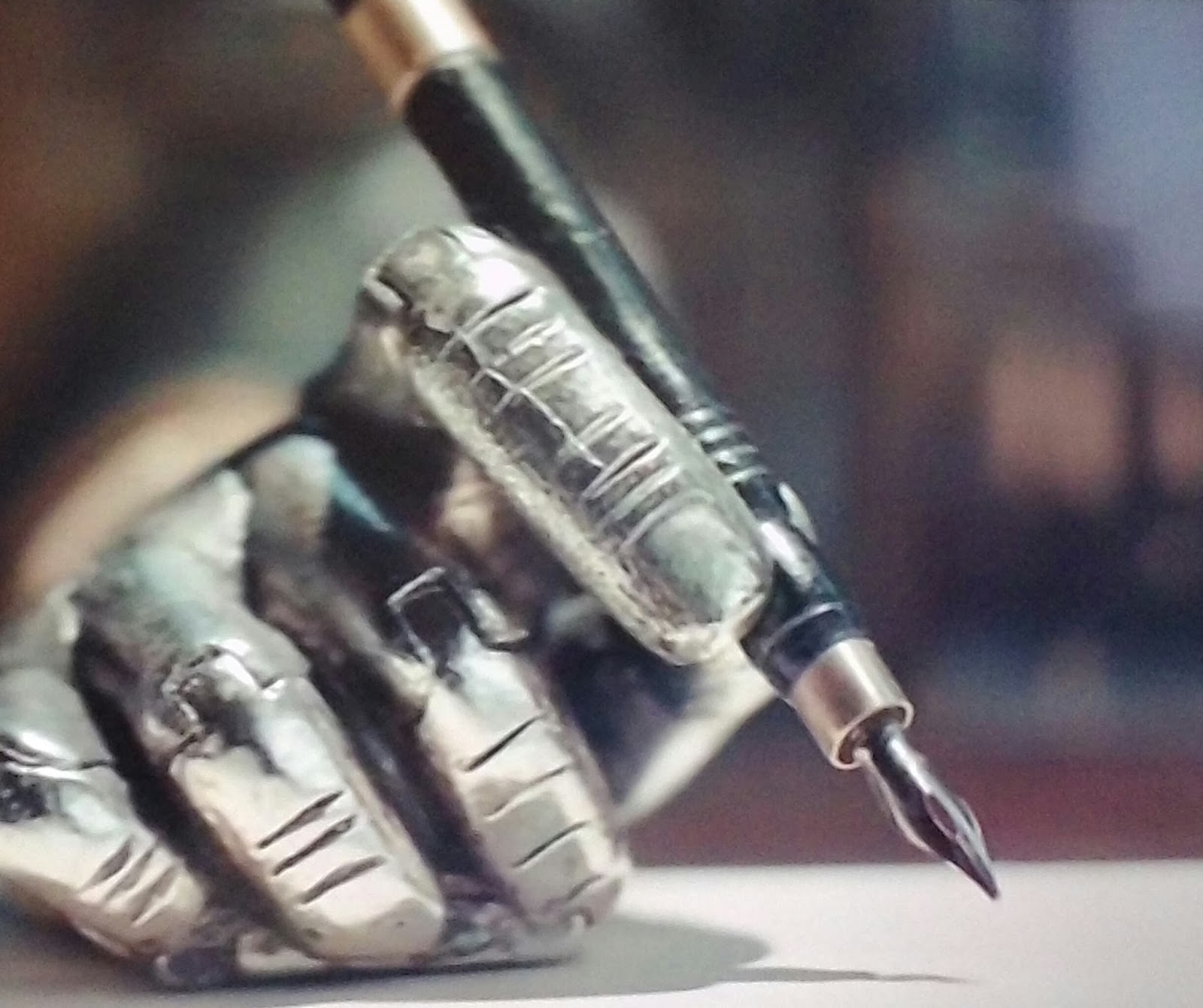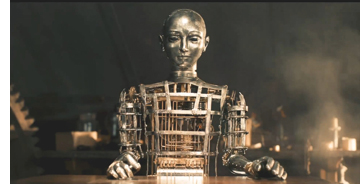
The first time was amazingly effective (re-staging one of the most famous train wrecks in history), but the second felt gimmicky (and a little creepy). There was also the decision to have Hugo wake from a nightmare not once, but twice–a double fake out.
Automaton hugo movie#
At times the story moves a little slowly, especially for a movie meant partly for children.

I never saw Hugo in a theater, but what fun that must’ve been to see clips from The Kid, The General, Les Vampires and more played to a regular, unsuspecting audience.Īre there any weak spots in this modern classic? Perhaps.
Automaton hugo series#
(I envy the folks who got to research all the details for these scenes!)įilm lovers will also appreciate the many nods to silent cinema history, shown in series of clips as the two children research in a library and attend a showing of Safety Last (Hugo also dangles from a clock briefly a la Harold Lloyd). The wacky costumes, the giant puppets, the hand-painted scenery–we get to see how it all might’ve looked in real life. Scorsese replicates Méliès’s Robert-Houdin theater, the famous glass movie studio at Montreuil, and shows him at work filming some of his famous scenes. Lovers of early film history will die when they watch this film. Somehow, Scorsese’s masterful use of cinematography and color make this Paris train station as inviting as your usual little French village.Īnd best of all, Scorsese pays a perfect tribute to Méliès. Even darkened scenes have a bit of a glow to them. What was the automaton trying to write? What were the sad memories the old man was trying to forget? It was all an intriguing mystery, and it had a surprising and unique payoff.Īmong the many things I appreciate about Hugo–the acting, the sets, the soundtrack–high on the list are the warm, bright, inviting colors that pervade the movie, rather than the usual “gritty” tones and filters that Hollywood is so fond of currently. The first time I watched Hugo the story pulled me in hook, line and sinker (I had never read the novel it was based on). Hugo shows her his father’s automaton, and in time, the automaton reveals a secret that connects their two worlds in a way they had never imagined. She introduces him to her grandfather (Ben Kingsley), who sells toys in a booth in the train station. He befriends a girl named Isabelle (Chloe Grace Moretz), a book lover always ready for an adventure. Among his few possessions is his father’s broken automaton–an intricate mechanical man–which Hugo is determined to try and fix.īetween his work on the clocks and tinkering with the automaton, Hugo observes life in the busy train station and carefully avoids the bumbling station inspector (Sacha Baron Cohen). When the relative vanishes the mechanical-minded Hugo secretly takes over his job. His father had died in a tragic accident, leaving Hugo in the care of an alcoholic relative who tends clocks in the train station. Hugo (Asa Butterfield) is a boy who lives in the Montparnasse train station in Paris in the 1930s. And contrary to what the trailers implied, it was a little less about the boy Hugo himself and more a tribute to the life and work of Georges Méliès. For one thing, it was a magical 3-D family film by Martin Scorsese, of all people, creator of Raging Bull and Gangs of New York among many others.

Released during the brief Silent Film Awareness Renaissance of 2011 (when The Artist won Best Picture, remember), Hugo was a film that took many people by surprise. In other words, you’ve fallen for Hugo (2011).

One day you realized it’s become one of your go-to classics. When it came out on DVD you ended up buying it, and found yourself re-watching it from time to time. Judging by the trailer, you expected it to be pleasant and entertaining enough, but it turned out to have more depth than you’d thought. Sometimes one of today’s films will take you by surprise.


 0 kommentar(er)
0 kommentar(er)
